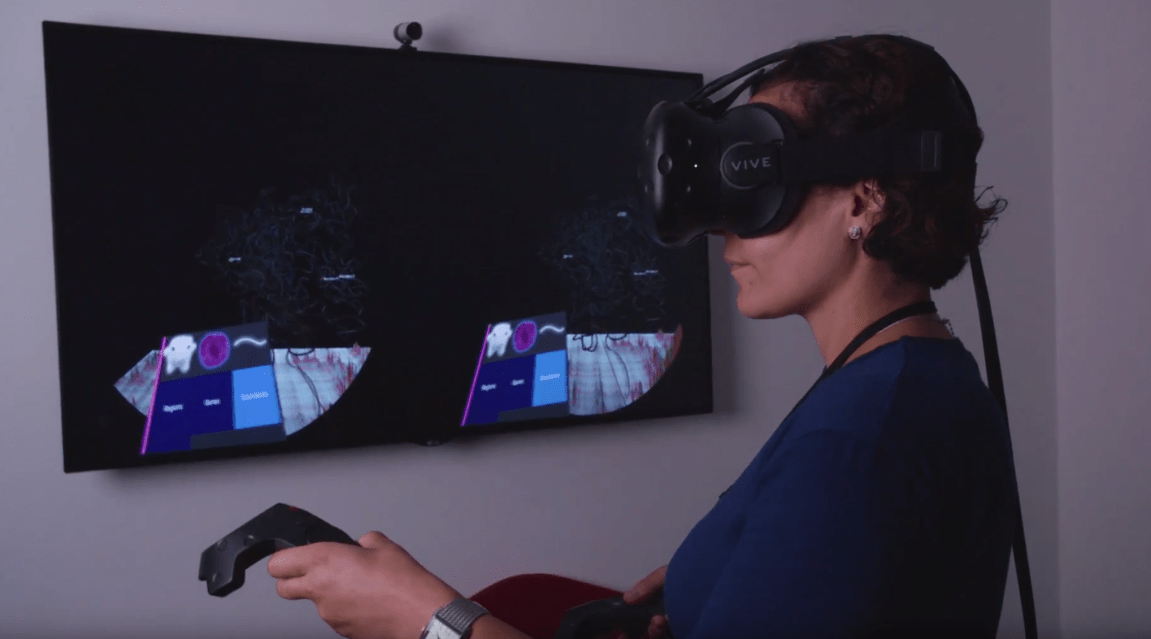
A team of researchers has developed a method of using virtual reality headsets to view 3D models of genetic data. The simulations bring together data from genome sequencing, information about DNA interactions, and microscopy data.
“By combining data on the genome sequence with data on gene interactions we can create a 3-D model that shows where regulatory elements and the genes they control sit relative to each other,” said Prof. Jim Hughes, Associate Professor of Genome Biology at Oxford University, in a press release. “It makes it easier to understand the processes going on within a living cell.”

Each of the 37 trillion cells in an adult human body holds two meters of DNA within its nucleus. We’ve had the capability to sequence DNA for a long time, but the way the two-mile strand of DNA is folded up might directly influence gene expression. If we can visualize the specific arrangement, we might be more effective at finding important insights into human genetic disease, because humans are very good at visual pattern recognition.
The researchers are currently using this visualization technique to study diabetes, cancer, and multiple sclerosis. The long-term goal is for the project to help with efforts to establish a method of correcting faulty genes and introducing them to the body.